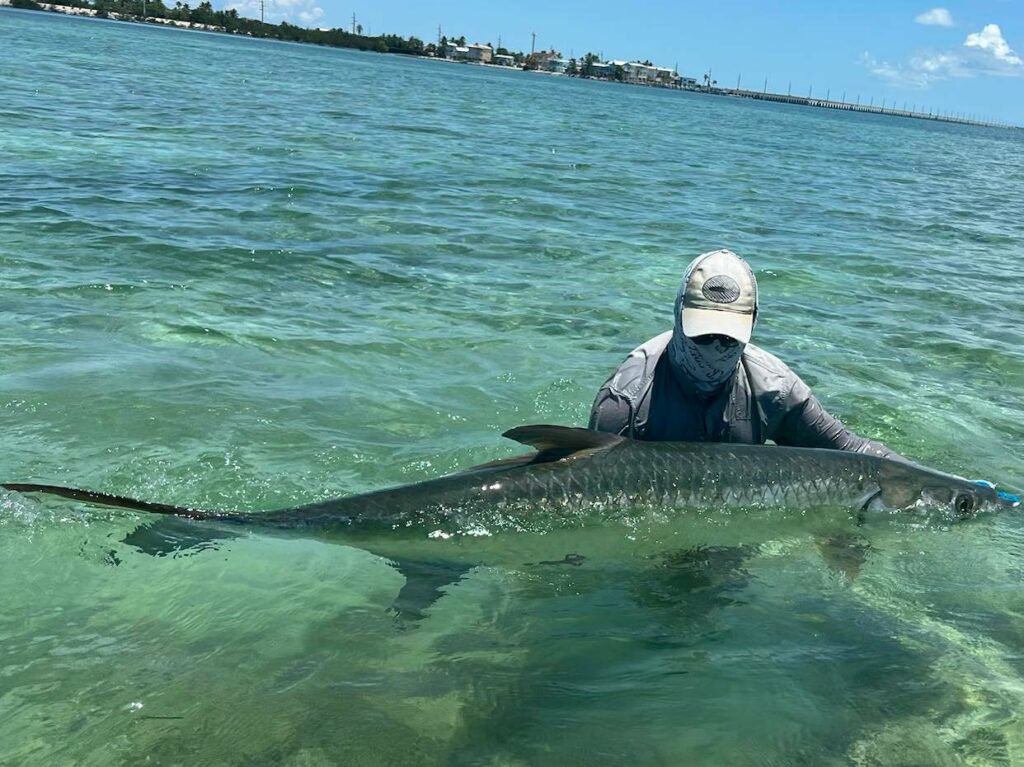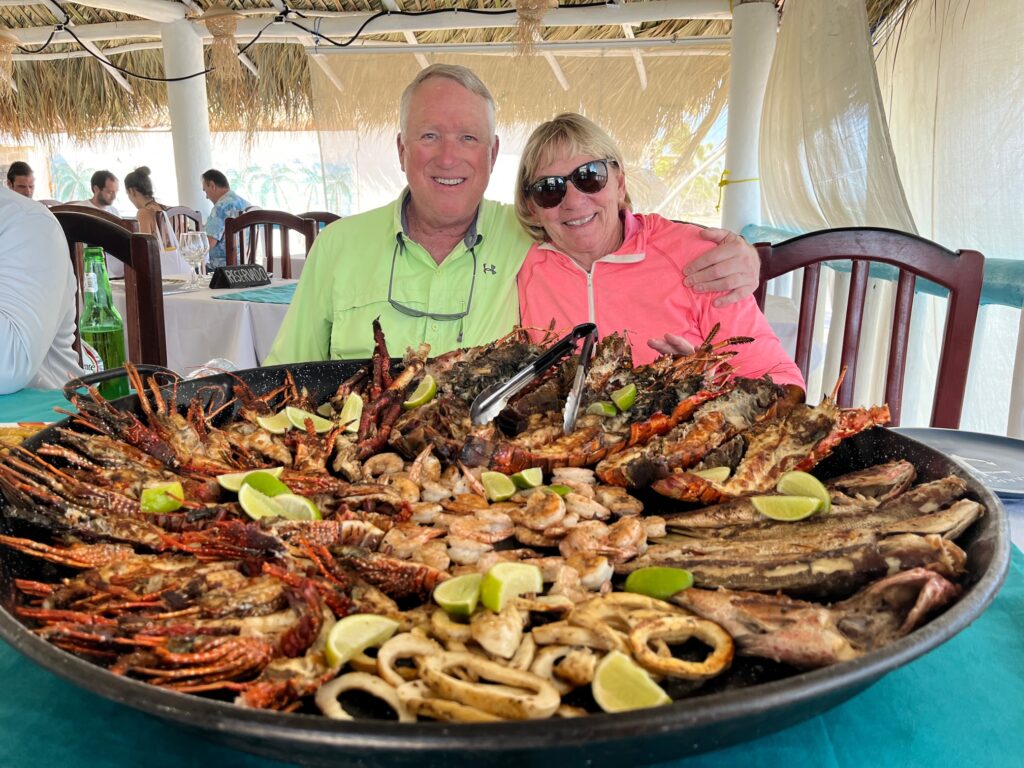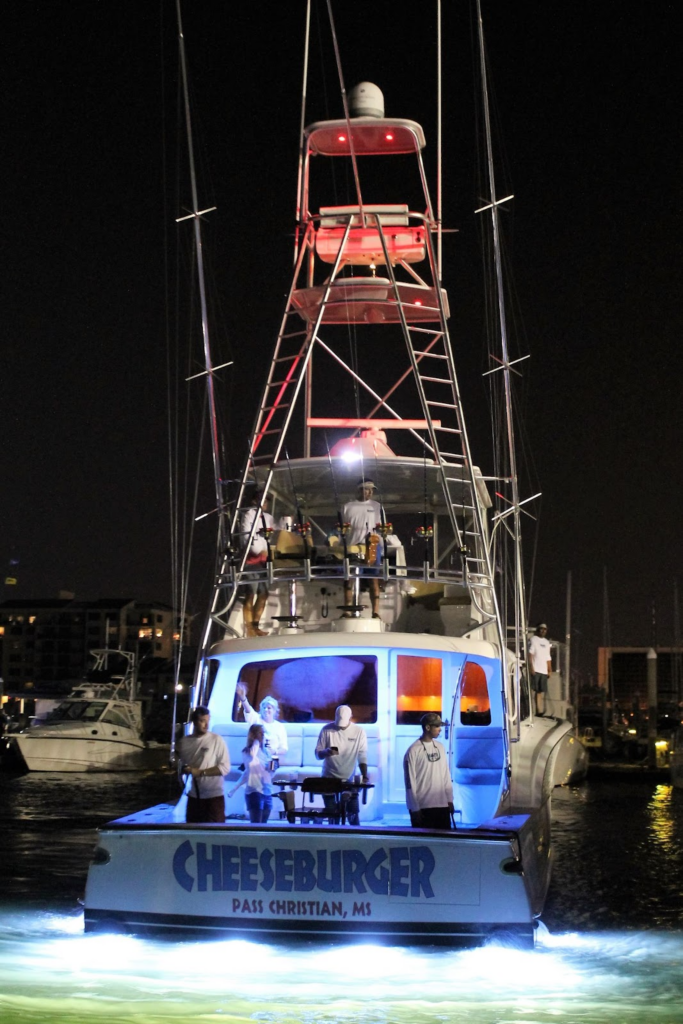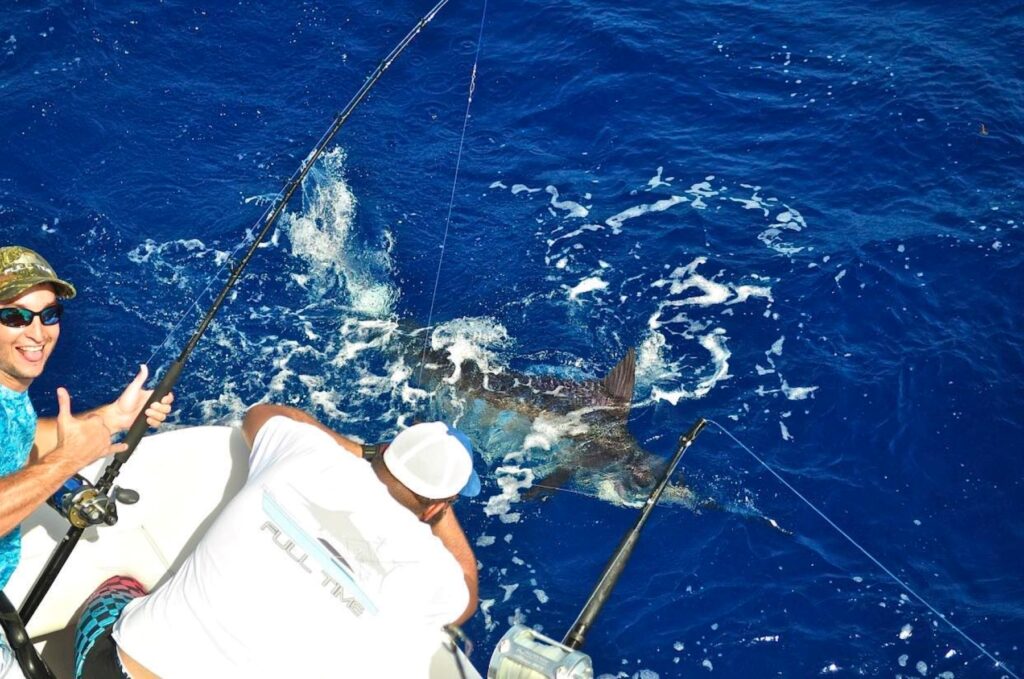Table of Contents
Introduction to Sportfish Travel
Midwest couple Steve and Sue Pfeifer got a taste of saltwater fishing when they moved to Islamorada, Florida, a decade ago after renting for five years. They bought a 27-foot Everglades and were at first content to fish and compete in some of the local sailfish tournaments. But the horizon beckoned. The couple moved up to a 54-foot Viking and ventured 70 nautical miles south to compete in the Viking Key West Challenge for a few years.
The Evolution of a Sportfishing Passion
Next came the lure of the Bahamas. A short trip to Chub Cay saw the couple’s beginner’s luck strike when they caught and released a few blue marlin at the Pocket. Hooked on exploring new fishing grounds, the Pfeifers and their captain have today put together an ever-evolving and expanding program of traveling to sportfish.
“I remember Carmine Galati telling me when I bought the 54 that it would be a good starter boat,” Pfeifer said. “I didn’t understand what he meant at the time. Now I do.” Pfeifer now owns the 62 Viking, MDALA, and travels between Florida, the Bahamas, and the Dominican Republic each year, with occasional trips to the Gulf of Mexico.

Family and Fishing: Balancing the Sportfish Lifestyle
Family and fishing guide many owners when mapping out a traveling sportfishing program. Many times, one is as important as the other. A good example is one shared by Mike Criscola, from Fair Haven, New Jersey, whose family owns the 62-foot Titan, Crisdel, and who is on the board of trustees at the International Game Fishing Association.
Choosing Destinations: The Art of Sportfish Travel
“My father, Frank Criscola, Sr., got the original Crisdel, a 30-foot Luhrs, back in 1969,” Criscola said. “Throughout the years, the Crisdel has been a staple on the offshore tournament circuit from the Walker’s Cay Bertram Hatteras Shootout to the Mid Atlantic $500,000 Fishing Tournament. We still go to the Bahamas in the spring. We’ve been going to Harbour Island since 2001. The year starts for us sailfishing in Islamorada and ends in New Jersey when the striped bass are running. We love to all fish together.”
Inclusive Adventures: Fishing with Family and Friends
The hunt for specific species and high-stakes competition weighs heavily on Crisdel’s travel schedule too. For Criscola, and now the fourth generation of his family, it’s the April to mid- to late-June tarpon bite in the backwaters of the Everglades that has become an annual must-do. “We’re not hyper-focused on one species,” he said.
“Tarpon fishing on fly is near the top of the list. We book our local guides a year in advance because they specialize in this type of fishing. The big boat acts like a mothership, and we’ll take the skiffs for two or three days into the backcountry. Islamorada and the Everglades are near and dear to our family.”

Expert Advice: Tips from Veteran Sportfish Travelers
Since 2007, Criscola has been the Chairman of the Gold Cup Tarpon Tournament. This tournament, often called the World Series of tarpon fishing, happens in June. It is around the same time that Capt. George Steller takes the Crisdel north up the Atlantic coast to New Jersey, where tournaments drive their schedule. There’s the Manasquan Marlin & Tuna Club’s Jack Meyer Trolling Tournament in July, the Ocean City White Marlin Open, the Beach Haven Marlin & Tuna Club’s White Marlin Invitational in August, and then the MidAtlantic Tournament out of Cape May at the end of August. Crisdel finishes the year fun fishing in the fall off Nantucket for bluefin tuna.
“I’m old school,” Criscola says. “I print a blank calendar on 8.5 x 11-inch notebook paper, and we plan four months at a time. Ballpark dates, although the tournaments do a good job of holding their dates, and that makes it easier to plan.”

The Blending of Fishing and Family: The MDALA Experience
Catching and kin all figure into where the MDALA goes as well. “My wife Susie is an avid angler,” says Pfeifer. “A few years back, we did the Florida Keys Gold Cup Sailfish Championship series. Capt. John Hagen and the crew traveled with the boat, pre-fished and caught the live bait beforehand. It was great, but we realized we didn’t incorporate the family. So we decided to do the light-tackle Islamorada’s Fish for Holly Sailfish Tournament. Susie, female family members, and her friends all fished it. Susie especially loves live baiting. The women’s crew now does all the local sailfish tournaments.”
Where the Pfeifer’s take the MDALA to fish isn’t always about hardcore fishing, he adds. “For us, family and fishing are 50-50,” he said. “For example, if we’re at Chub and the conditions are wrong for the Pocket, we’ll take the skiff out and zip up north for mutton snapper or to snorkel. Or my daughter and her husband will fly down to the Bahamas for a four-to-five-day stay on the boat. Or we’ll all go down for 10 days or longer. We’ll rendezvous in Harbor Island first, then fish for marlin, yellowfin or snapper, or take time to feed the turtles, go snorkeling or swim with the pigs. Everyone has a say. The boat is a family magnet.”
Diverse Destinations: The Cheeseburger’s Seasonal Adventures
Family and fishing with non-fishing friends also determine where the Cheeseburger chugs. Ron and Laura Ladner own the 60-foot Sculley with Rimmer Covington, Jr, a fellow fisherman and Ron’s business partner at the Pass Christian, Mississippi-headquartered Shaggy’s restaurant chain.
“Our travel schedule is primarily based on seasons and places that give us opportunities for everyone to experience something as well as to put up some numbers,” says Cheeseburger’s Capt. Gabe Toepfer. Over the last year, Toepfer has helmed the vessel to the Bahamas in late spring and early summer, to the British Virgin Islands for the full moon marlin bite from July to September, and then Cap Cana in the Dominican Republic for October to December and Casa de Campo January through March.
“A big component of our operation is to make sure that everyone, even family and friends that may not be as gung-ho to catch billfish as we are, enjoy themselves and want to come back,” Toepfer says. “We welcome all billfish, but blue marlin would be our target species. Some destinations resonate with us more than others that keep us coming back annually, and if there is a tournament during the time we are there, we all enjoy the competition.”
In the future, Toepfer adds the Cheeseburger team hopes to transit the Panama canal and explore Panama, Costa Rica and the Baja Peninsula. Like the MDALA and Crisdel teams, fishing friends figure prominently in intel gathering on where to go for the Cheeseburger team as well.
“Over the years, our team has built a strong network of fellow captains, mates, owners, dock masters and tournament directors,” says Toepfer. “One of the most refreshing qualities that these folks all have in common is that they are open and honest about the who, what, where, why and how things are going wherever they are fishing. We keep our ‘Coconut Telegraph’ game strong.”
MDALA’s Capt. Hagen agrees and adds, “Facebook, Instagram, there’s a lot of stuff out there. But I always follow up with a phone call to see what’s really happening before we consider putting a place on our schedule.” Captains carry a lot of weight in destination decisions. MDALA’s Hagen is a good example, says Pfeifer. “John grew up in the Keys and took trips to the Bahamas as a child. He spent a lot of time there, so he knew the area and the good places to go. Likewise, he’d been up to Orange Beach and fished off the oil rigs. He showed us that area too.”
Advanced Planning: The Backbone of a Successful Sportfish Program

The first step in launching a traveling program is a boat that can go the distance. “Sixty feet seems to be a good, sweet spot for us,” says Cheeseburger’s Capt. Toepfer. “It’s large enough to fish in rough conditions, yet still small enough to be nimble on a hot fish. Our fuel capacity, speed, range, draft and storage space are all obvious considerations as well. But most of all, the reliability of the machinery and systems and having the space to stock parts and service items are essential. Staying on top of service and repairs makes all the difference when we are traveling.”
The MDALA may become a 68 in the future. “As we continue to travel, there are advantages to a larger boat,” says Pfeifer. “We’ve pretty much maxed out the 62 and could use more storage, a tackle center, a built-in oven and more rod storage. I’d like an enclosed bridge as well because it adds the equivalent of another 4 to 5 feet to the boat. I understand what Carmine meant. But I’m not ready to give up the 62 yet. It’s a good traveling boat.”
One of the first points Pfeifer recognized when he set his sights on creating the travel program he ideally envisioned is that it’s equivalent to running a small business. A full-time captain was needed, and he recognized Hagen had the temperament and skill set. A full-time mate came on board too when he moved to the 62. There’s also regular boat maintenance to keep up with the miles of wear and tear, stocking plenty of spare parts for breakdowns out in the boonies, and the everyday nuts-and-bolts tasks of traveling, like making reservations for everything from dockage to dining.

“The first year we went to the Dominican Republic, we stayed on the boat,” says Pfeifer. “Our program is now pursuing blue marlin on fly and the Dominican Republic is a good place for double-digit shots some days. So we’ll stay for three months at a time, flying back and forth, renting a condo and chef while we’re there.”
Most often captains are concierges in a traveling sportfishing program. “The only thing I didn’t do was book the jet because the owner’s executive assistant did that,” says Capt. Richard Peeples, who has run the 63’ Bertram, Full Time; 58’ Taylor Made, Coin Operated; and 60’ Viking, Pryorities in the Atlantic Ocean, Caribbean Sea and Gulf of Mexico. “That means villas, car rentals, dinner, or many times I did the cooking on the boat. I also recommend a first responders’ course to captains that will be traveling and have more in their first aid kit than Band-Aids and peroxide. Both can come in handy when you are miles from medical attention and someone gets a hook in their leg, breaks an arm or goes into anaphylactic shock.”
Voices of Experience: Insights from Seasoned Sportfish Enthusiasts
For those who are thinking of casting off for distant fishing grounds, these owners and captains offer champion advice. “Just do it,” says Pfeifer. “Many people worry about the fuel burn, but that’s the cheapest part of the deal. Get out, do it. Traveling to fish is so expanding.”
To get started, and keep developing a program, talk to like-minded friends, suggests Crisdel’s Criscola. “Find a friend that does the kind of fishing you do and like and network with them. Keep your network small, but tight.” Keep it simple. Make it fun. Roll with the punches.
Concluding Thoughts: The Essence of Traveling Sportfish Programs
“Have challenging fishing goals, but don’t let those goals get in the way of enjoying the experience,” says Toepfer. “Traveling is a huge commitment of time, money and other resources from the owner, which affords our team the opportunities to fish in some of the most special places on Earth. That said, take a destination for a test ride before putting it on the schedule. We have had great success determining what destinations are a good fit for our program by chartering with local guides. It’s the best investment you can make.”
Don’t Forget to Check Out Our Sportfishing Job Board! Did You Know? It’s the perfect platform for seeking skilled captains and mates. Whether you’re on the hunt for your dream team or looking to join one, your next big adventure begins here. Explore the opportunities now! Click Here
Dive Deeper into the World of Sportfishing
Unlock Exclusive Savings: Enjoy 50% Off Your Subscription!
Are you ready to explore the thrilling world of sportfishing from the comfort of your home? Subscribe now and embark on a journey filled with captivating stories, expert insights, and insider tips. Choose between our digital or print edition and secure an incredible 50% discount on your subscription.
Subscribe today and get ready for an adventure like no other. Click here to subscribe and elevate your sportfishing experience with InTheBite Sportfishing Magazine.










